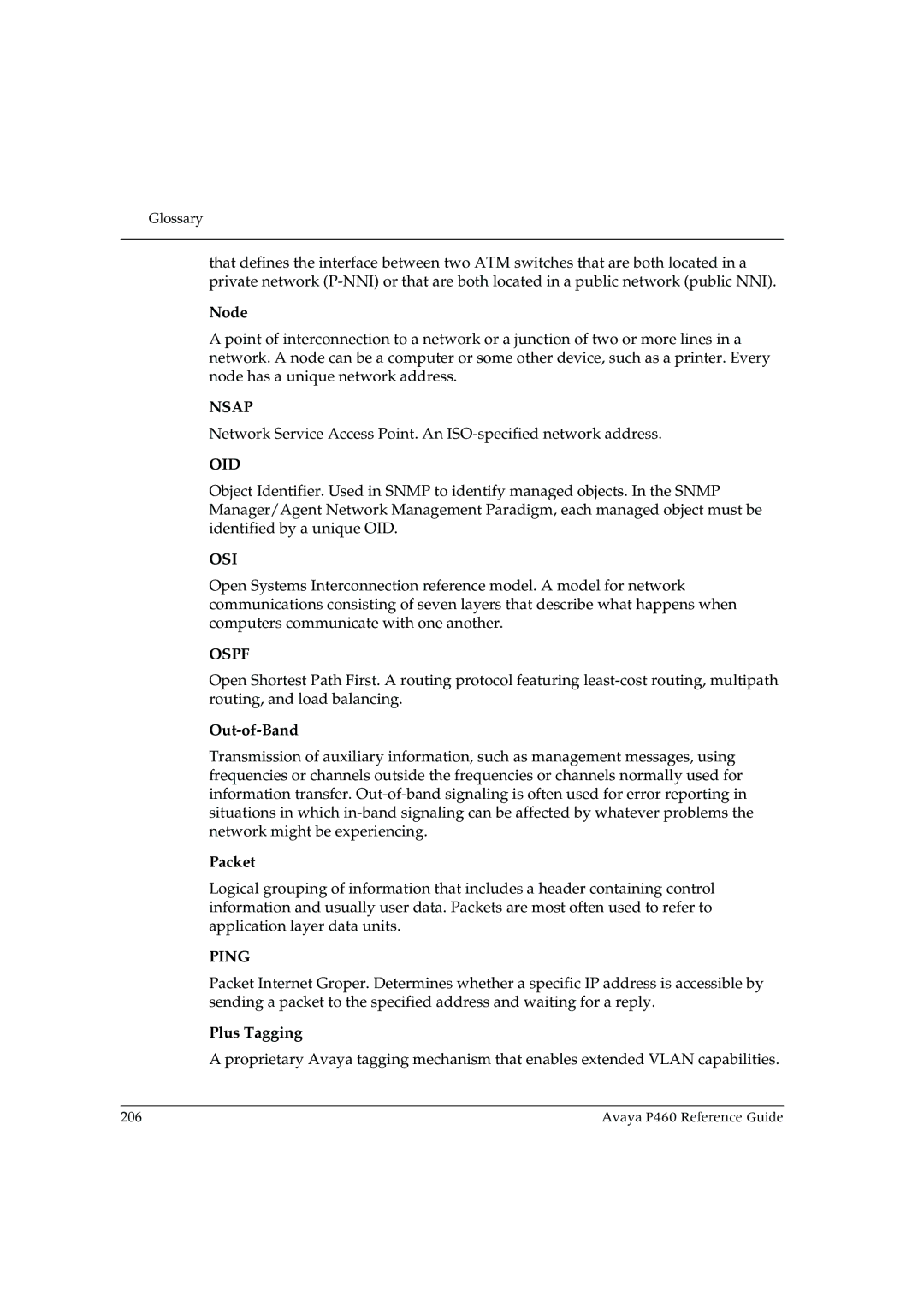
Glossary
that defines the interface between two ATM switches that are both located in a private network
Node
A point of interconnection to a network or a junction of two or more lines in a network. A node can be a computer or some other device, such as a printer. Every node has a unique network address.
NSAP
Network Service Access Point. An
OID
Object Identifier. Used in SNMP to identify managed objects. In the SNMP Manager/Agent Network Management Paradigm, each managed object must be identified by a unique OID.
OSI
Open Systems Interconnection reference model. A model for network communications consisting of seven layers that describe what happens when computers communicate with one another.
OSPF
Open Shortest Path First. A routing protocol featuring
Out-of-Band
Transmission of auxiliary information, such as management messages, using frequencies or channels outside the frequencies or channels normally used for information transfer.
Packet
Logical grouping of information that includes a header containing control information and usually user data. Packets are most often used to refer to application layer data units.
PING
Packet Internet Groper. Determines whether a specific IP address is accessible by sending a packet to the specified address and waiting for a reply.
Plus Tagging
A proprietary Avaya tagging mechanism that enables extended VLAN capabilities.
206 | Avaya P460 Reference Guide |
